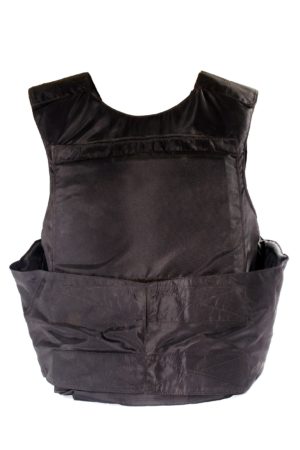 Recently I found an article in Science News on an old material with a new use. The material is polymer that is similar to a fiber used in making bulletproof vests. Apparently, with some modifications, it has been made into a very tough material with similar toughness, stiffness, and water content as cartilage in the body. Cartilage is the material that covers bones and makes up joints in the body. The degenerative type of arthritis one gets as they age, osteoarthritis, involves the deterioration of cartilage. This is also the same wear that people have in their joints that leads to the need for joint replacement.
Recently I found an article in Science News on an old material with a new use. The material is polymer that is similar to a fiber used in making bulletproof vests. Apparently, with some modifications, it has been made into a very tough material with similar toughness, stiffness, and water content as cartilage in the body. Cartilage is the material that covers bones and makes up joints in the body. The degenerative type of arthritis one gets as they age, osteoarthritis, involves the deterioration of cartilage. This is also the same wear that people have in their joints that leads to the need for joint replacement.
Artificial Disc Cartilage
Developing an artificial material that would replace the cartilage-on-bone in joints with the same or better properties of current joints is desirable. Instead of preforming total joint replacements, the worn cartilage could just be replaced. This would probably be much simpler and less risky. The artificial cartilage most likely could be used on any joint versus trying to make replacement type specific joints for each joint in the body. It most likely would just be a coating placed on the current cartilage as a replacement without the need to remove the old bone and joint structure. The main problem now is that we do not know yet how to make the material adhere to the bone.
The new material is what is called a hydrogel that is mostly water and contains microscopic aramid fibers. These fibers are what strengthen bulletproof vests. The material is made of either 70 percent or 92 percent water. It was able to maintain its shape when squeezed or stretched. Best yet it exceeded the toughness and stiffness of real cartilage that is found in our bodies.
The new material is exciting since it has the properties to replace cartilage which is the main problem we have as we age since it deteriorates. Damaged cartilage is what leads to the joint pain that many people suffer. The unique material may also be able to be used in other structures like tendons, ligaments and possibly even discs in the spine. If we can figure out if the material can be integrated into the body without difficulty and can be attached solidly to bone, it has real potential.
Currently we do not know how well it will do in the body. The next phase of research is whether it will be safe and effective for use in animal or human bodies. Whether we have found the solution to age related degeneration or not, it is still too early to know. If the research does pan out it will be a wonderful solution to improve aging.